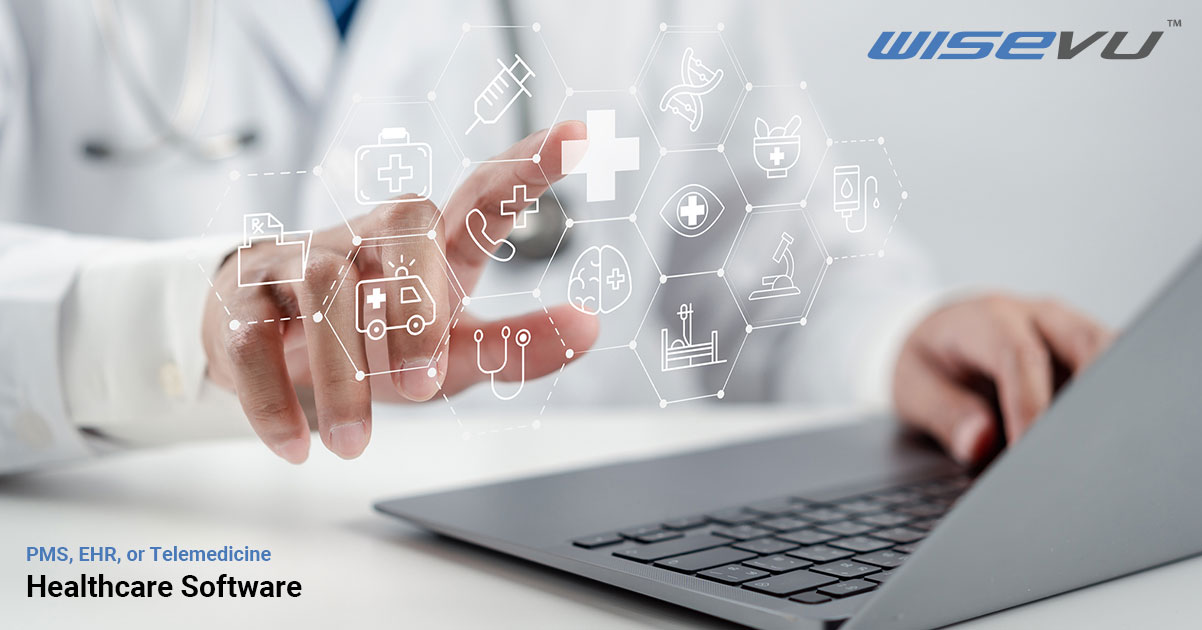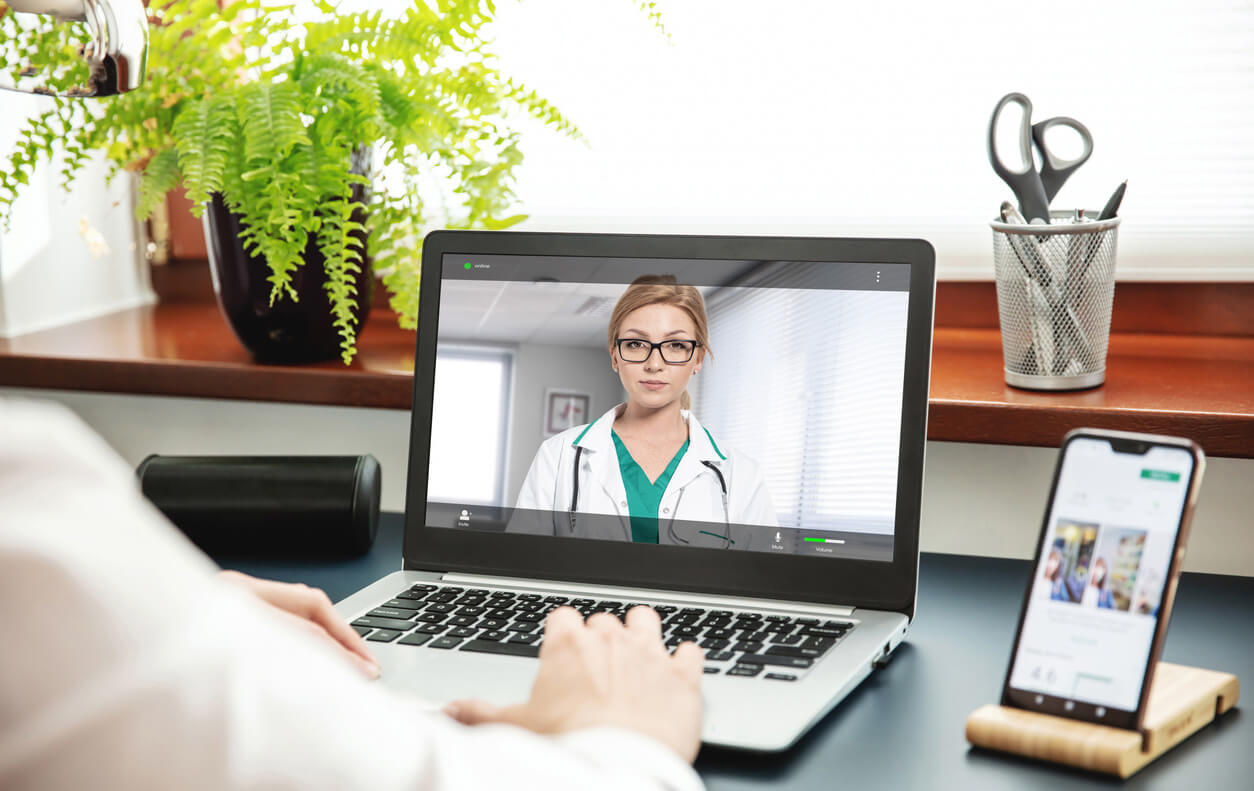PMS, EHR, or Telemedicine: Which Healthcare Software Does Your Practice Need?
The right healthcare software can transform your practice, but with so many options—PMS, EHR, and Telemedicine—it’s easy to feel overwhelmed. Each serves a unique role, from managing schedules to improving patient care and virtual consultations.

But which one is the best fit for your needs? Let’s break down the key differences of each platform to help you make an informed decision on which one aligns best with your practice’s goals and workflow.
Understanding PMS, EHR, and Telemedicine
Practice Management Software (PMS)
PMS focuses on the administrative side of healthcare. It streamlines patient scheduling, billing, and claims processing. Medical practices use it to organize their daily operations and reduce manual work.

Benefits of PMS
- Automates administrative processes – Reduces paperwork and saves time.
- Improves billing efficiency – Lowers the chance of errors in insurance claims.
- Enhances financial management – Provides reports and analytics to track revenue and expenses.
Who Can Benefit from PMS?
If your practice spends too much time on scheduling, billing, or insurance claims, PMS can help. It reduces manual tasks, minimizes errors, and streamlines workflows, making operations smoother. With automation handling the admin work, healthcare providers can focus on what matters most—patient care.
Electronic Health Records (EHR)
EHR software focuses on clinical data management. It stores patient medical records electronically, providing quick access to health histories, diagnoses, and treatments. EHRs also enhance care access, increase patient satisfaction, and reduce medical spending, especially when integrated with telehealth programs.1

Benefits of EHR
- Supports clinical decision-making – Helps doctors with treatment planning using past patient data.
- Improves communication – Allows healthcare teams to share records across facilities.
- Reduces medication errors – Uses clinical decision support to prevent prescription mistakes.2
Who Can Benefit From EHR?
Medical practices moving from paper to digital records can streamline operations with EHR software. Clinics needing instant access to patient histories for accurate diagnoses will find it invaluable. Hospitals and specialists collaborating with labs and pharmacies can also use EHR to enhance data sharing and improve care coordination.
Telemedicine Platforms
Telemedicine software enables remote healthcare delivery. It allows patients to consult doctors virtually, reducing the need for in-person visits. The adoption of telehealth tools has increased significantly, with physician usage rising from 14% in 2016 to 80% in 2022.3

Benefits of Telemedicine
- Improves healthcare access – Benefits patients in rural and underserved areas.4
- Enhances chronic disease management – Supports remote monitoring for long-term conditions.
- Reduces patient travel – Minimizes congestion in healthcare facilities.
Who Can Benefit From Telemedicine Software?
For healthcare providers seeking a flexible way to connect with patients, telemedicine is a valuable tool. Clinics managing chronic conditions or follow-up care can use remote monitoring to improve patient support. Additionally, providers looking to reach patients beyond their physical locations can rely on telemedicine to offer accessible care, especially for those who have trouble travelling to in-person appointments.
Comparing PMS, EHR, and Telemedicine
Each of these software types serves a distinct function, but they can also work together. Understanding their differences will help guide your decision.

| Software Type | Best For | Primary Benefits |
| PMS | Administrative efficiency | Simplifies scheduling, billing, and claims processing |
| EHR | Clinical data management | Provides digital records for better patient care, improves access, and reduces costs when integrated with telehealth |
| Telemedicine | Remote patient care | Expands access through virtual consultations, enhances satisfaction, and lowers expenses when combined with EHR |
Which Software Is Right for Your Practice?
If administrative work takes too much time and pulls attention away from patient care, PMS can help streamline daily operations. Practices that often deal with billing errors and claim denials can use PMS to simplify processes and speed up revenue collection. It also makes financial tracking and reporting easier, helping practices stay on top of cash flow and budgeting.

EHR is essential for practices that need better organization and faster access to patient records. If doctors and staff struggle to retrieve patient histories, an EHR system can improve workflow and support better treatment decisions. Clinics that work closely with pharmacies, labs, or hospitals benefit from EHR’s ability to share accurate data across systems.
Telemedicine works well for practices that want to reach patients beyond their physical locations. Remote consultations can improve access to care, especially for patients who have trouble visiting a clinic. Clinics treating chronic conditions can use telehealth to monitor patients more frequently and improve engagement. Adding telemedicine to a practice can also help lower costs while making healthcare more convenient for patients.
Can You Use More Than One?
Many medical practices integrate PMS, EHR, and telemedicine to enhance efficiency and patient care. Some software providers even offer combined solutions.

For example:
- A family clinic might use PMS for scheduling, EHR for patient records, and telemedicine for remote consultations.
- A hospital may require all three to manage operations, maintain records, and extend care through virtual visits.
- A mental health practice could rely on EHRs to assess patient history while using telemedicine to provide therapy sessions.
Final Thoughts
Selecting the right software depends on your practice’s goals. PMS simplifies administrative tasks, EHR improves clinical data management, and telemedicine expands access to care. In many cases, using a combination of these solutions creates the most effective system. Proper assessment of your needs can help you choose which software will best support your practice’s success.
How We Can Help
At Wisevu, we specialize in helping medical practices navigate the complexities of healthcare technology. Our team can identify the right software solutions for your practice and implement digital strategies that optimize efficiency, improve patient engagement, and drive growth. Contact us today!
References
- Zhang, Xinyue, and Richard Saltman. “Impact of Electronic Health Record Interoperability on Telehealth Service Outcomes.” JMIR medical informatics vol. 10,1 e31837. 11 Jan. 2022, doi:10.2196/31837
- Tolulope Odugbose et al. “The impact of healthcare information technology on reducing medication errors: A review of recent advances.” International Journal of Frontiers in Medicine and Surgery Research (2024). https://doi.org/10.53294/ijfmsr.2024.5.2.0034.
- American Medical Association and American Medical Association. “AMA Digital Health Care 2022 Study Findings.” American Medical Association, 28 Sept. 2022, www.ama-assn.org/about/research/ama-digital-health-care-2022-study-findings?
- Ejike Innocent Nwankwo et al. “Integrating Telemedicine and AI to Improve Healthcare Access in Rural Settings.” International Journal of Life Science Research Archive (2024). https://doi.org/10.53771/ijlsra.2024.7.1.0061.
